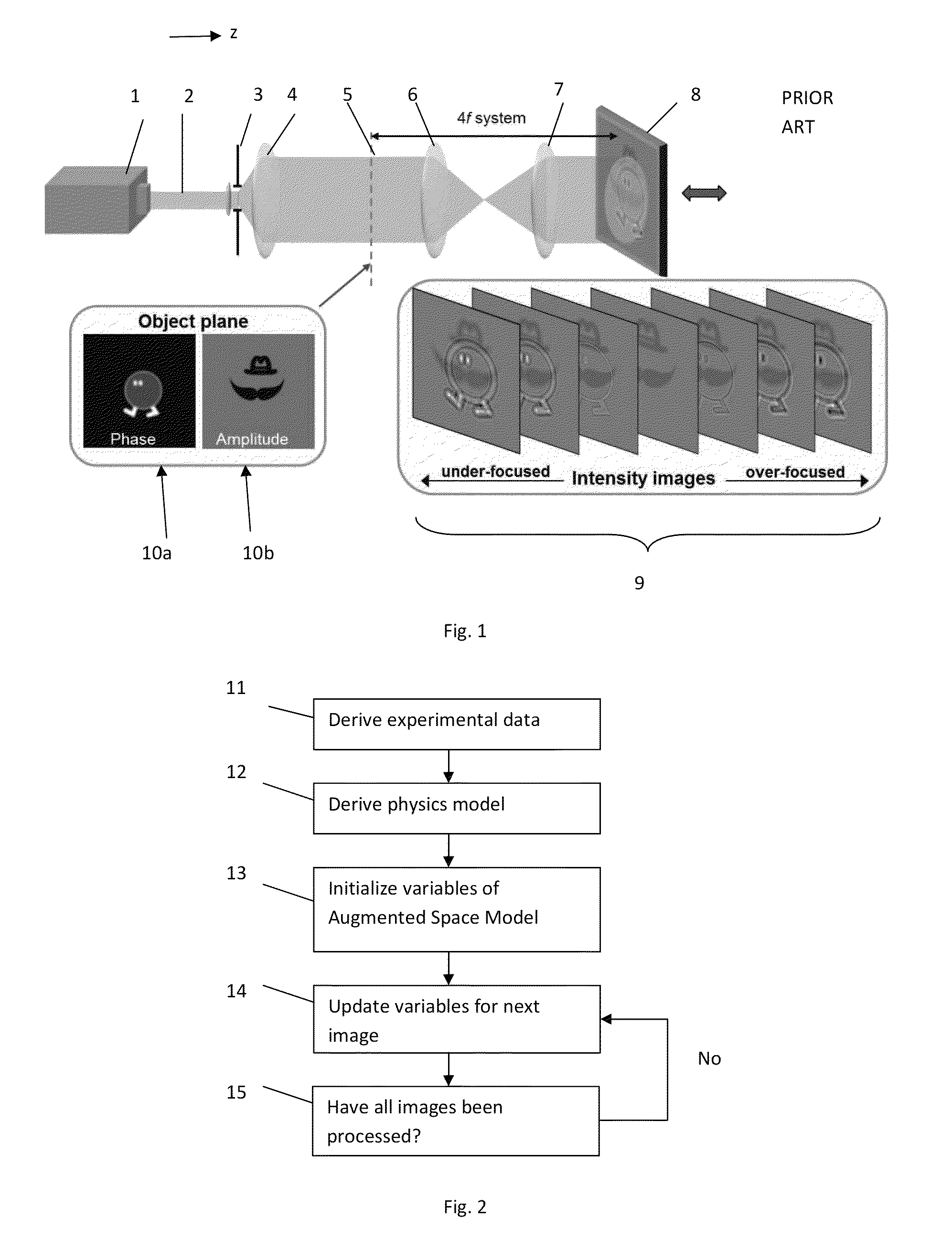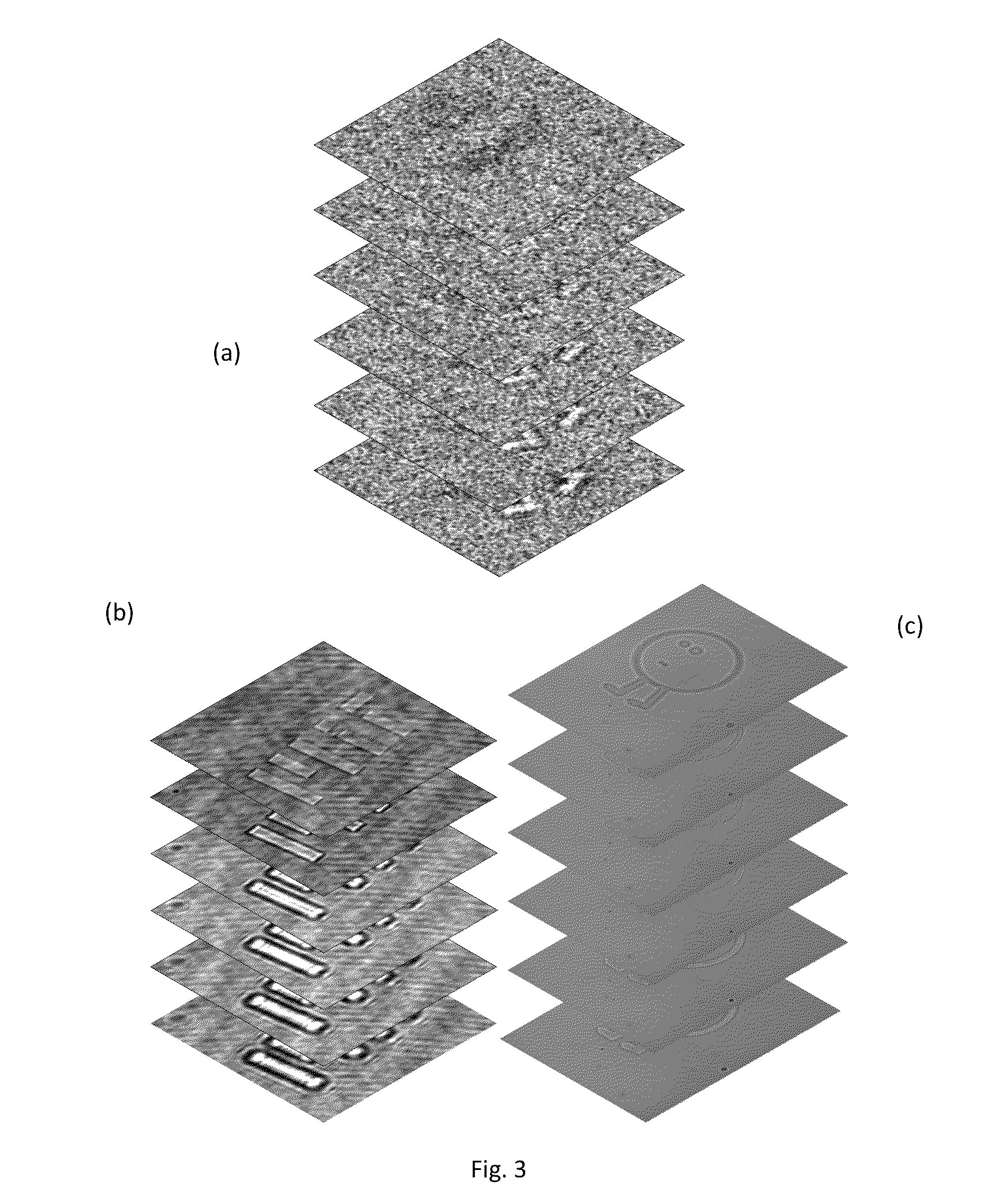Methods and apparatus for recovering phase and amplitude from intensity images
a phase and intensity image technology, applied in the field of intensity image recovery methods and apparatuses, can solve the problems of inability to efficiently recover inability to reduce computational complexity, and inability to achieve the effect of reducing computational complexity, improving robustness to noise, and efficiently recovering phase and phase of optical fields
- Summary
- Abstract
- Description
- Claims
- Application Information
AI Technical Summary
Benefits of technology
Problems solved by technology
Method used
Image
Examples
Embodiment Construction
[0031]A flow chart of the embodiment is shown in FIG. 2. Step 11 is to set up experimental conditions, such as those in FIG. 1, to collect a series of intensity images in different parallel planes. The images are M1×M2 pixels. Step 12 is to use the parameters of the experimental set-up to generate a physical model describing it. These steps are the same as used, for example, in [1], as described above.
[0032]The remaining steps employ a novel augmented state space model. In step 13 parameters of the model are initialised. In step 14, the data for a first of the series of images is used to update the model. As described below this makes use of a novel phase reconstruction algorithm, assuming a diagonal covariance matrix. Step 14 is performed repeatedly for successive ones of the series of images, until all images have been processed.
1. Problem Description and Physical Model
[0033]We aim at estimating the 2D complex-field A(x,y,z0) at the focal plane z0, from a sequence of noisy intensi...
PUM
 Login to View More
Login to View More Abstract
Description
Claims
Application Information
 Login to View More
Login to View More - R&D
- Intellectual Property
- Life Sciences
- Materials
- Tech Scout
- Unparalleled Data Quality
- Higher Quality Content
- 60% Fewer Hallucinations
Browse by: Latest US Patents, China's latest patents, Technical Efficacy Thesaurus, Application Domain, Technology Topic, Popular Technical Reports.
© 2025 PatSnap. All rights reserved.Legal|Privacy policy|Modern Slavery Act Transparency Statement|Sitemap|About US| Contact US: help@patsnap.com



